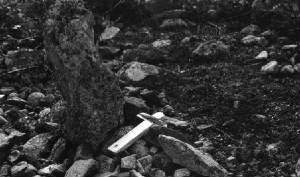|
|

|
|
The Blackwater Valley
Project is currently examining the architectural impact of the fortified/plantation house in the Blackwater valley region
of North Cork 1580-1650. The project includes several integrated components, archaeological and archival research, and education.
|

|
Over the
past six decades, studies concerning Irish fortified houses have identified them as a transitional genre that emerged at the
end of the sixteenth century and acted as an architectural bridge between the Irish medieval tower-house and the country manor
house of the late seventeenth century. The fortified house drew on the earlier tradition of the tower-house and was influenced
by the Tudor and emerging Jacobean architecture from England and the Classical and Military architecture coming from Continental
Europe. The social, political and military changes that took place from the 1580s-1650s were to play a major role in the development
of this unique Irish structure. These houses provided a comfortable living space for the elite of early seventeenth-century
Irish society. They were fashionable yet defendable. The fortified house was a public display of power and wealth. They represented
a long-term investment in their owner’s regional future and were monuments to an aspiration for an English and Continental
house style suited to local Irish conditions. On a basic level the construction of a fortified house represented the owners
desire to modernise and Anglicize.
|

|
| |
|
| |
Blackwater~Archaeology: Archaeological Research |
| |
This site is not for profit educational research; Note: all drawings, images, photographs and articles
can not be used for sale, profit, economic gain, or publication.
|